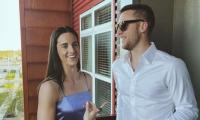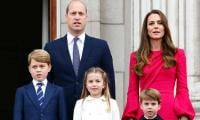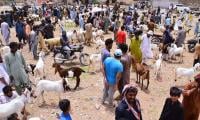A BBC report on September 4 (https://tinyurl.com/y4n3a3ra) describes one of the great mysteries of the Covid-19 pandemic: the African continent was bracing for waves of hospitalizations and deaths that never materialized and a majority of infections are either mild or asymptomatic.
It asks the question: “Is there a link between poverty, crowded accommodations, and Africa’s baffling low infection and death rates from the pandemic?”
The mystery deepens when you realize that merely close quarter accommodations, high population densities do not explain the low infection rates and hospitalization rates in Africa. India and parts of Brazil, Rio’s favelas, present counter-cases where we see the exact opposite happening.
Yet, Pakistan, located next door to India and with a dense population that hugs its major rivers, seems to have gotten over its first wave in significantly better shape than its eastern neighbor. Clearly, there is still much we have to learn about the (probably) multiple factors that determine how the virus affects people.
The government is taking full credit for its ‘smart lockdown’ for the relatively unscathed manner in which we scraped past the pandemic. In hindsight, adherence to protective measures was barely seen in the bubble of the elite. Further afield, in smaller cities, towns and rural areas, adherence to those same guidelines was mostly superficial. Today, much of whatever little adherence to protective guidelines there was at one point has dissipated completely.
In stark contrast, enforcement of protective guidelines was more aggressive in Saudi Arabia, and other Gulf countries. It took strict curfews for months on end, movement restrictions to within neighborhoods, fines for being caught without face masks, etc to bring the pandemic under control. Even then, with a population of 34 million, only 15 percent of our 220 million, the case count there roughly equaled Pakistan’s. Whatever other factors contributed to getting us over the worst of the pandemic, it was not because we all wore masks and gloves and used hand sanitizers. Some societies, for whatever reasons, suffered less devastating effects.
After much hand-wringing, this week the government finally announced the phased reopening of schools and universities, beginning with senior students, and moving down to younger grades. It is also insisting that reopening of educational institutes will be conditioned on the same kind of strict adherence to SOPs that we saw flaunted for the last few months. According to media coverage, students will attend classes on alternate days to reduce student density to about half the regular. Double shifts have been prohibited, and students will be required to wear masks and wash their hands frequently.
Meanwhile, in the real world, head teachers in districts that I talked to have no idea how they are expected to adhere to SOPs when many schools do not have bathrooms or running water, making simple things like hand washing impossible. A recent study by an independent, non-partisan think tank, has determined that the monthly cost of providing soap alone to all schools will be Rs450 million. The provision of hand sanitizer, which is also listed among precautionary measures, is even further removed from reality. Realistically speaking, do not expect to see children wearing face masks in non-air-conditioned rooms (the weather is still too hot).
A head teacher I spoke with yesterday said, “I teach a multigrade class, the room is so small that I can’t even put furniture in it. How am I supposed to social distance?” Parents who send children to elite private schools are still waiting for assurance from their schools, suggesting schools are struggling to ensure safety as prescribed.
There has been an announcement in Punjab that district-level “monitoring committees” have been established that will verify adherence to SOPs many schools are yet to receive. The non-existent enforcement of protective guidelines we saw in the spring gives me little hope that these committees are anything more than a useless exercise to keep those involved looking busy for our benefit, little more than an eyewash.
Instead of feeding people fairytales of SOPs that we all know will not be followed, may we ask for some straight talk instead? The time at which all parents assess that it is safe for their children to go back to school may still be a long way off. Some parents will deem it safe to send their children back to school before others. Meanwhile, governments across the globe are understandably hesitant to reopen schools for fear of being held responsible for the first child casualty by Covid-19 due to transmission at school.
Realizing this, several institutions have opted for hybrid approaches to reopening that put the final decision, and with it the responsibilities for health risk and learning loss (whether to attend classes in person or online), back in the hands of parents and students.
For example, a family friend, who is currently a faculty member at the State University of New York (SUNY) at Fredonia, NY, described how his university is accommodating students’ concerns this semester. Those who wish to attend classes in person may do so. Those who are uncomfortable with the on-campus classes may join classes online. Finally, those who consider the online educational experience subpar and neither want to take classes online nor risk infection in class, have the option of sitting out the semester or even the entire academic year.
Our elite private schools may be able to replicate even the most resource intensive solutions from abroad as-is. However, poorly resourced public schools whose parents’ pockets may not be deep enough to get their children all the resources to learn at home (high-speed Internet, computer) will need other solutions. For parents who are still uncomfortable sending their children to school but can provide the support and learning resources necessary to continue education at home, this can be as simple as collecting / dropping off homework from / to school. Although there are many arguments against it, even sitting out the school year should be made an option.
Public schools are neither resourced nor prepared to reopen according to the SOPs and protective guidelines that the government announced through the media. Recent events have shown that it is unlikely that these decisions can be enforced and monitored, as is often the case when decision-making is centralized and far removed from the realities of the communities on which they are imposed.
Instead, please, just be honest with parents about what is realistically possible and what is not. Give them options so they can make a decision that is right for them and that they are comfortable with. Do not tell them tales of monitoring committees and protective SOPs that cannot be enforced.
The writer is an independent education researcher and consultant. She has a PhD in Education from Michigan State University.
People stand in line up as election officials check their ballot papers during voting general election at a polling...
Women show their voter identity cards as they stand in a queue before casting their votes in Agartala. — PTIThe 18th...
Former prime minister Imran Khan. — Instagram/ imrankhan.ptiAn old saying has it that “when you dance with the...
Kashmiris in Indian illegally occupied Kashmir protesting against the Indian occupation as the forces of India looked...
A representational image showing residents walking at a wholesale market in Karachi. — AFP/FileOnce again there is...
A representational image showing late Pakistani human rights activist and Supreme Court lawyer Asma Jahangir. —...







